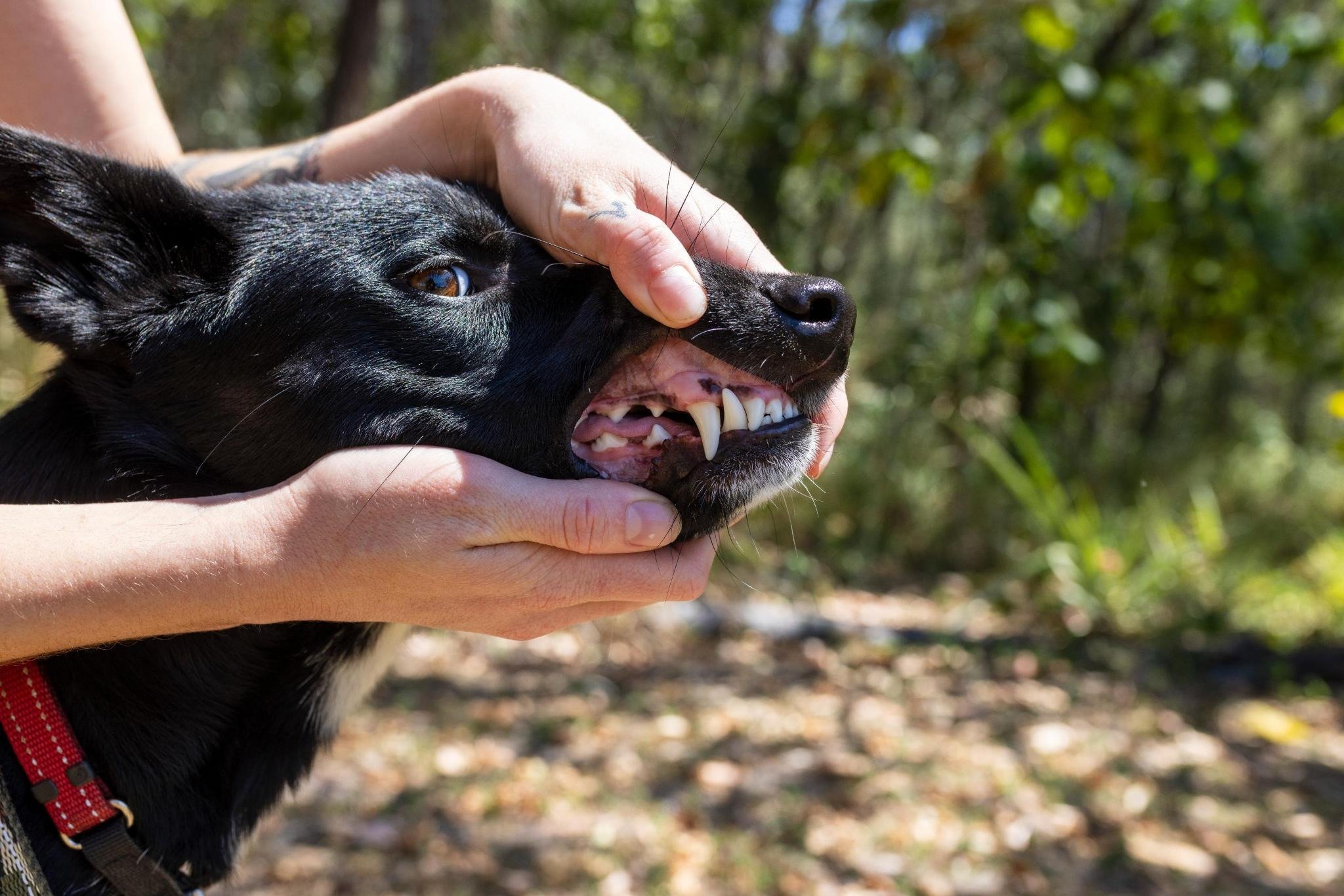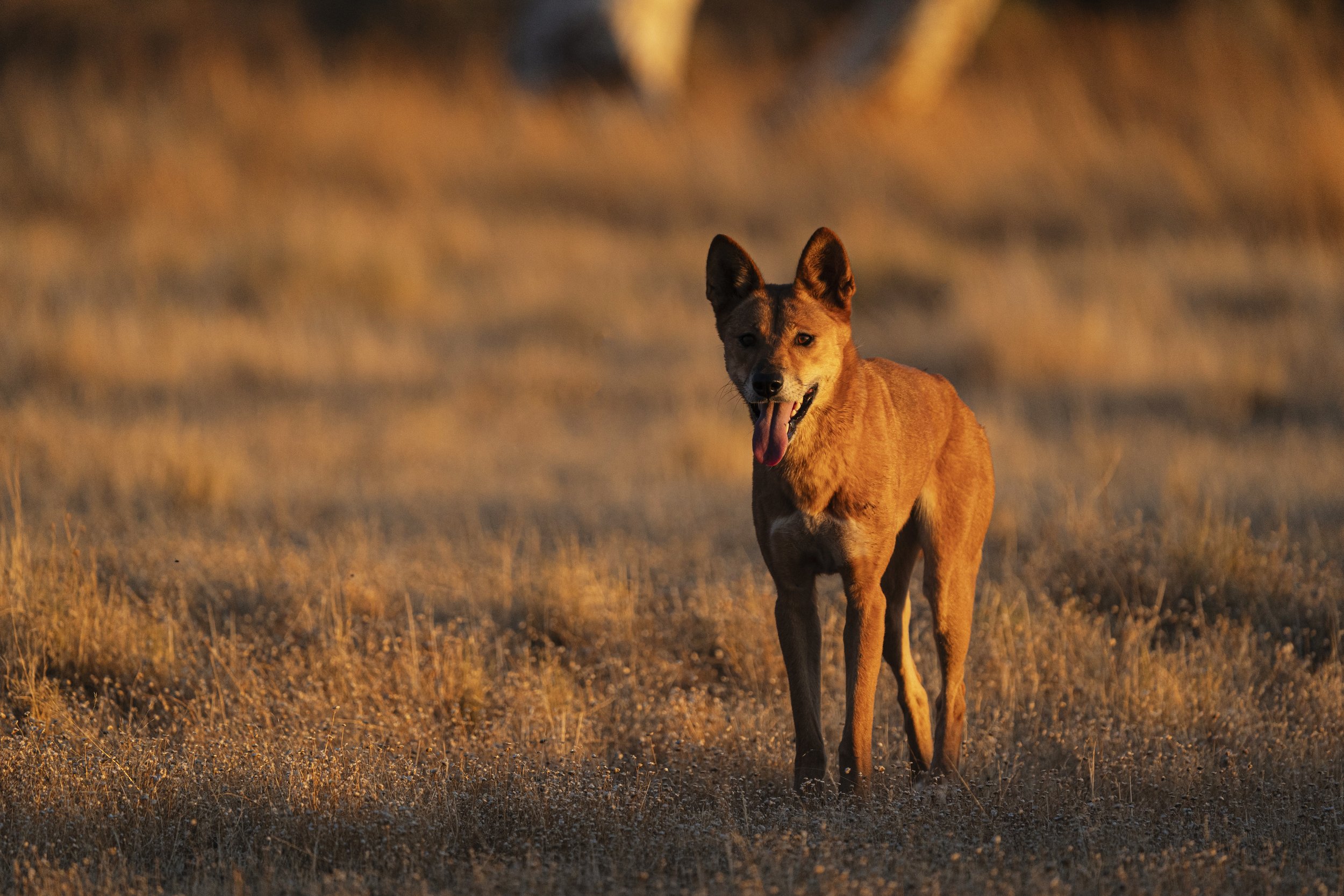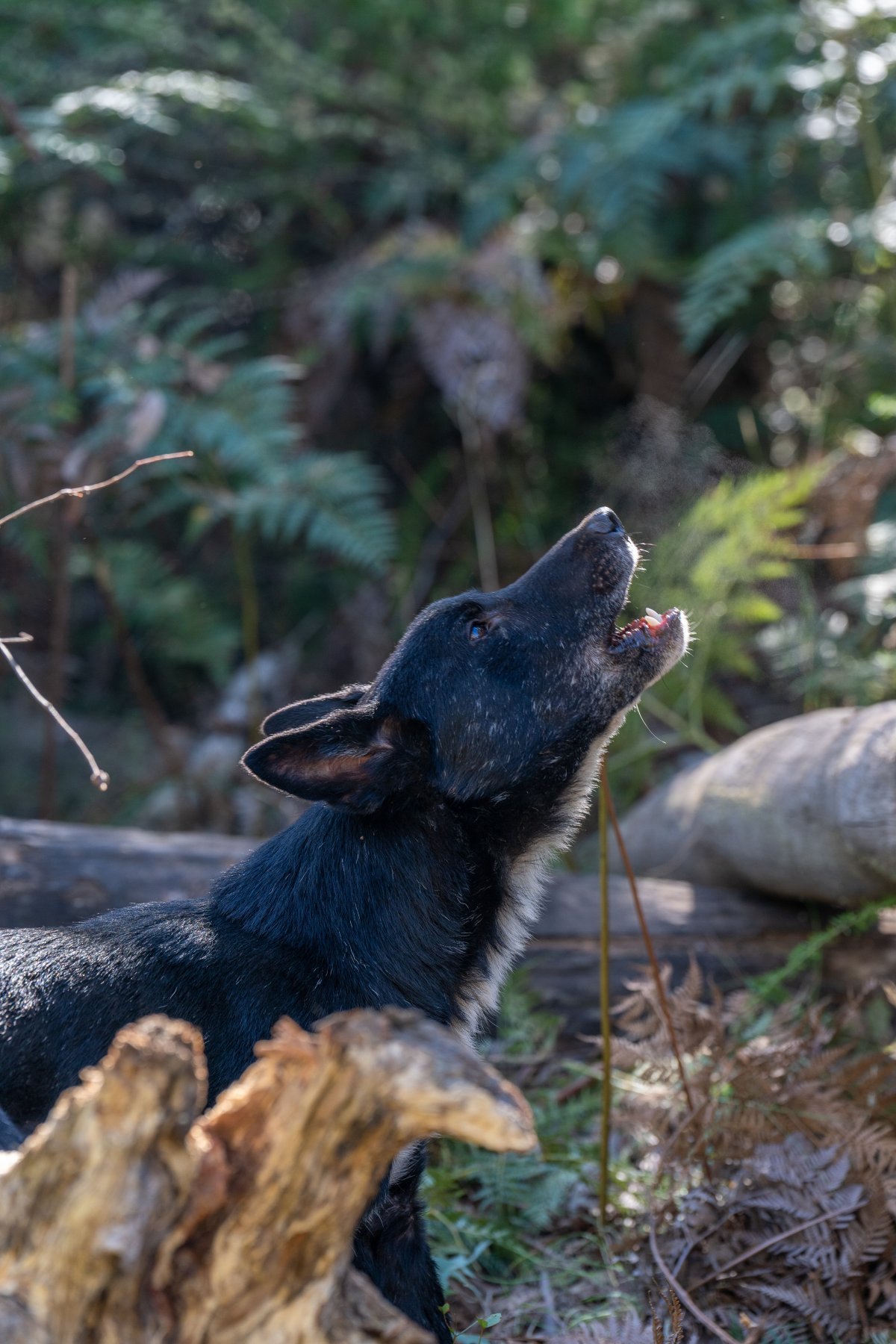
Identifying a Dingo
It comes as a surprise to many people that dingoes come in many different colours. This means dingoes can not be identified simply by looking at the colour of their coats. Despite this, there are many defining features that help to identify dingoes and distinguish them from domestic dogs.
Dingoes have evolved many different coat variations for life in Australia. Though the most common coat colour is the iconic sandy phenotype, dingoes also commonly have brindle, black and tan, sable, patchy, black, and white coats. Coat colour is not a determinant of genetic purity. This means a dingo can’t be identified by coat colour under any circumstances.
Dingoes have evolved in Australia over thousands of years to adapt to the continent's harsh conditions.
Dingoes have wide heads and narrow chests
The widest part of a dingo is at the base of their jaw and they have a narrow chest, this means that anywhere their head can fit through, their bodies can too. This distinguishes dingoes from domestic dogs who have broader chests and smaller heads.
Dingoes are
extremely flexible
Dingoes are extremely flexible, possessing the ability to rotate their wrists and subluxate their joints. Dingoes are also double jointed in their limbs and can turn their neck 180 degrees in any direction, all of which is impossible for a domestic dog. This flexibility assists them in moving through the often unforgiving Australian landscape.

Snout, jaws and
teeth designed for efficient hunting
Dingoes' jaws can open wider than domestic dogs, their teeth tend to be larger and are evenly spread in their mouth, with slight gaps between each tooth, making them ideal for hunting and eating prey. Despite their larger teeth, dingoes do not experience dental overcrowding like domestic dogs. Dingoes also have long, pointed snouts, which helps them with digging.
Unlike domestic dogs, dingoes don’t often bark, but when they do it tends to be a single sharp bark rather than a series of ongoing yaps. They make a range of other vocalisations to communicate including howling, whining, chuffing, growling and yelping.
Vocalisations

Dingo tracks
Dingo tracks differ significantly to that of domestic dogs. Dingoes move through the landscape utilising a method known as ‘direct registering’ where they place each hind paw in the print of the corresponding forepaw. Direct registering helps to minimise visible tracks and sound. This also assists dingoes in ensuring safe footing for their hind legs when moving through rough terrain.
Colours of the dingo
It comes as a surprise to many people that dingoes come in a variety of colours and there is no colour that distinguishes a native dingo. While the sandy variety is the most commonly known and photographed, dingo coats can be black, white, tan, brindle, and even patchy.
Research by The University of New South Wales (UNSW) and collaborators found that while 53% of dingoes have a sandy coat colour, 14% were brindle, 11% black and tan, 9% sable, 6% patchy, 5% black, and 1% were white.






